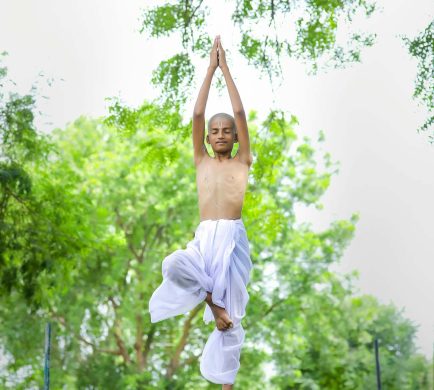By Mary Odgers
As anyone who has experienced loss knows—whether the loss of a loved one, a pet, a job, a marriage,a home, or something else dear—no two“deaths”are ever alike. We may draw on father some hard-won strength to cope or even find our way through, but grief is definitely a process that lacks a blueprint. It can bring up cherished memories, regrets, relief, resentments . . .sometimes all in one day.
If I were to give any advice to someone in mourning, no matter the source of the grief, trauma, or loss, I would say to definitely acknowledge that you’ve experienced an adverse event. In the beginning, the care and attention you receive from having been a victim of that event can be exceptionally comforting. However, unless your reality progresses to a perspective that does not include your loss or tribulation, you will find yourself living the trauma over and over again, simply to get that warm feeling of comfort, becoming a language of sorts that you speak. But when you make the decision to leave victimhood and start taking back control of your life, it is empowering. Yes, it may be a lot of work, requiring determination to implement the new mindset and choices, but if I can do it, I truly believe that you can too.
I would also say that because grief is such a highly personal experience, one that carries myriad nuances depending on the relationship and circumstance of the loss, you should never attempt to deny your feelings. You must allow yourself to grieve. Holding in your emotions will cause resistance and disease. When guilt seeps in and you’re feeling too much or too little, be sure to give yourself a break and realize that grief not only has an identity of its own, it has two sides: sadness, which is sentimental and gentle; and trauma, which is abrupt and frightening. Both are typically present concurrently, but recognize that neither is actually part of you, and that both can dissipate with the appropriate time frame and perspective.
While I recognize that no one person can ever tell you how to grieve in your particular circumstance, and I know there’s no blueprint for how to navigate those darkest of days, I do know that reading about how others have coped can be incredibly comforting. This is why I chose to introduce you, within their own vignettes, to each of the places and people who will forever occupy space in my heart—because without an understanding of what our relationships were, it’s impossible to understand why the response to each loss was distinct.
As anyone who has experienced loss knows—whether the loss of a loved one, a pet, a job, a marriage, a home, or something else dear—no two “deaths” are ever alike. We may draw on faith or some hard-won strength to cope or even find our way through, but grief is definitely a process that lacks a blueprint. It can bring up cherished memories, regrets, relief, resentments . . . sometimes all in one day. Anger and sadness can rise up like a double helix of contrasting emotions; laughter can feel irreverent. I can truthfully say that losing Bruce and Patrick, in particular, were both akin to experiencing an amputation. Life became awkward and felt surreal until I learned to adapt; no prosthesis for an amputee feels natural, just like no person could ever come close to filling my void. I lost a part of myself that I will always miss, but thankfully, over time, I no longer had to change the dressing of the wound or feel the constant pain.
While I recognize that no one person can ever tell you how to grieve in your particular circumstance, and I know there’s no blueprint for how to navigate those darkest of days, I do know that reading about how others have coped can be incredibly comforting. This is why I chose to introduce you, within their own vignettes, to each of the places and people who will forever occupy space in my heart—because without an understanding of what our relationships were, it’s impossible to understand why the response to each loss was distinct.
As anyone who has experienced loss knows—whether the loss of a loved one, a pet, a job, a marriage, a home, or something else dear—no two “deaths” are ever alike. We may draw on faith or some hard-won strength to cope or even find our way through, but grief is definitely a process that lacks a blueprint. It can bring up cherished memories, regrets, relief, resentments . . . sometimes all in one day. Anger and sadness can rise up like a double helix of contrasting emotions; laughter can feel irreverent. I can truthfully say that losing Bruce and Patrick, in particular, were both akin to experiencing an amputation. Life became awkward and felt surreal until I learned to adapt; no prosthesis for an amputee feels natural, just like no person could ever come close to filling my void. I lost a part of myself that I will always miss, but thankfully, over time,
I no longer had to change the dressing of the wound or feel the constant pain.
People often told me that no one had ever been dealt a worse hand than I had. That might have been true for them intellectually, but again, who can quantify another’s pain of loss when it’s so subjective? For example, there were times I wondered why I wasn’t tortured by losing my own mother. I was sad, yes, but it didn’t seem like enough at times. I thought maybe there were limits on how much and how long we can experience grief. I now know that for comparison’s sake, I believed her death was part of the cycle of life. Her season was over, and that is why it hurt less. I likewise didn’t really grieve when my dad passed. The tears only came when I wrote his vignette. Perhaps it, too, felt like his season was over, and after he had been rendered a quadriplegic, his passing carried with it a feeling of relief for him as well, which made it less painful for me. Michael was a different level of grief altogether; with him, too, I felt some level of relief, knowing he was no longer suffering with addiction and had joined his beloved, Luc. But I also felt deep sadness that although he had been able to live an authentic life as a gay man for many years, he was never fully able to overcome the trauma of his childhood—of feeling “different,” encountering prejudices, and having his lifestyle interpreted by certain people as being “abnormal.”
Whatever the real reason is for you, don’t judge yourself for how you experience grief, and don’t be something you’re not simply to look a certain way to the world. Soon after Bruce and Patrick died, my mom and I were sitting together and she couldn’t talk. I was crying but she didn’t shed a tear. It was an “Isn’t life interesting?” moment that I’ve never forgotten. We both undoubtedly felt pain, but hers—perhaps because of her upbringing and self-imposed stoicism—remained inside while mine poured out.
So I would further say that by knowing who you are and taking what comes with forward vision, you will find your way through the pain. To do this, I suggest engaging in healthy activities that make you feel good, and nourishing yourself with good, positive people and self-care—hot baths, nutritious food, gentle exercise, time in nature, prayer, meditation—things that edify you, not that harm you or temporarily numb the pain artificially (such as alcohol, drugs, or taking extreme physical risks). You deserve to be taken care of while you are hurting, and although many of us haven’t been raised to prioritize ourselves, it’s vital that that loving care your soul needs begins with you. Remember that you’ve been injured and that it takes time to heal. How much time? There’s no way to know because each person is unique. Sometimes you have to be rocked to the polar opposite side to find yourself again. When that occurs, in retrospect, you can often see the divinity in something that could only be pain at the time.







